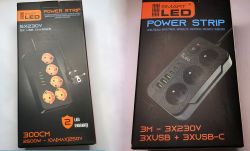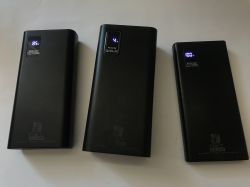
Today's test will focus entirely on powerbanks supporting the Quick Charge standard, i.e. capable of powering our mobile devices with a voltage higher than the standard 5 volts. This speeds up their charging significantly. The declared power of each unit is 22.5 watts and the capacities are 10 Ah, 20 Ah and 30 Ah, respectively. They can be purchased for, respectively, £60, £115 and £160. Does it make sense to pay this much? Let's find out!
All three powerbanks are from the same family, so a brief specification to start with:
- power up to 22.5 watts
- qC 3.0 and PD support
- output voltage up to 12 V (standard 5 V non-negotiable)
- cell capacities: 10 Ah, 20 Ah, 30 Ah (depending on model)
- charge level is shown as a percentage on the display
- battery type: lithium polymer
(according to data from the seller)
We will now move on to individual reviews.
Introduction BY-K7
First, the 10 Ah NXT Gear BY-K7. The markings on the box are detailed and leave no doubt. This does not have the problem that occurs with some of the cheapest products, where it is difficult to even find information on supported voltages.
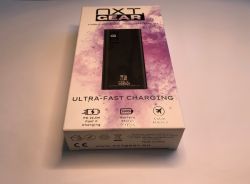
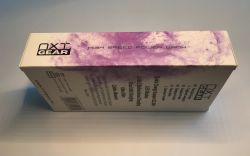
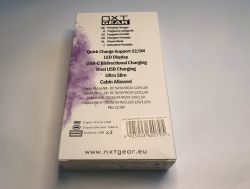
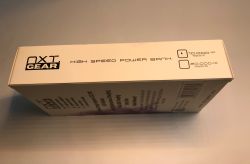

Some powerbanks try to advertise themselves as supporting 'fast charging', but 'fast' in the marketing sense - not the 'Quick Charge' standard. Here, however, the voltages are specified, so this concern is not there. We look further. A cable is included.

Voltages and currents are also indicated on the case. A manual is also included:

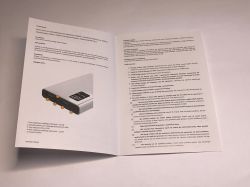

The two USB A ports are for powering other devices, the micro USB is for powering the powerbank itself, the USB C works both ways.
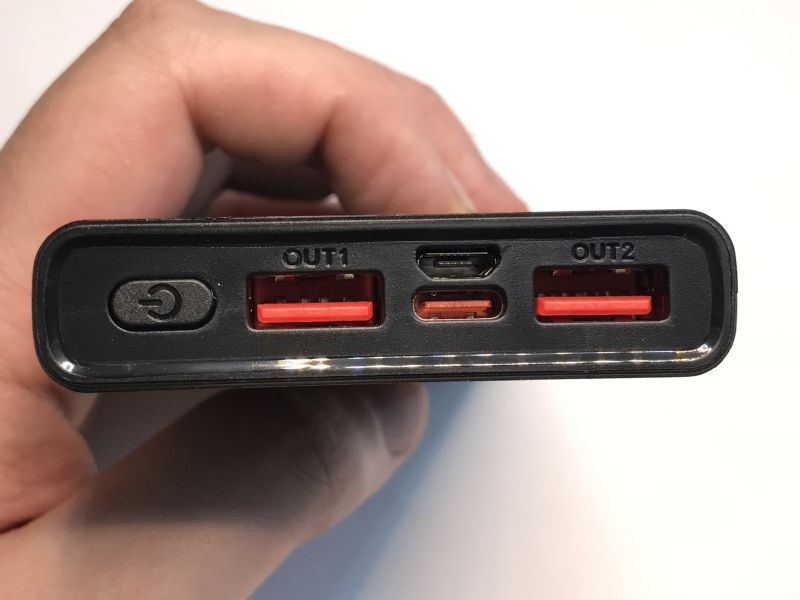
Pressing the button awakens the display and we already know how charged the powerbank is:
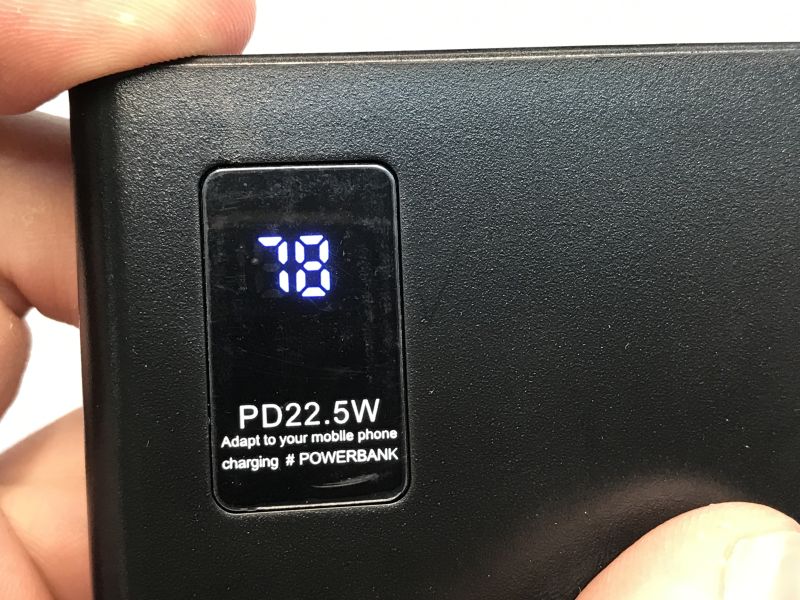
Test BY-K7
First, a test with the QC trigger. QC can be triggered in 2.0 and 3.0 mode, with selectable voltages (9 V, 12 V) and stepless voltage adjustment (up to 12 V). It manages to draw up to 1.8 A at 12 V, or approximately 21.5 W.
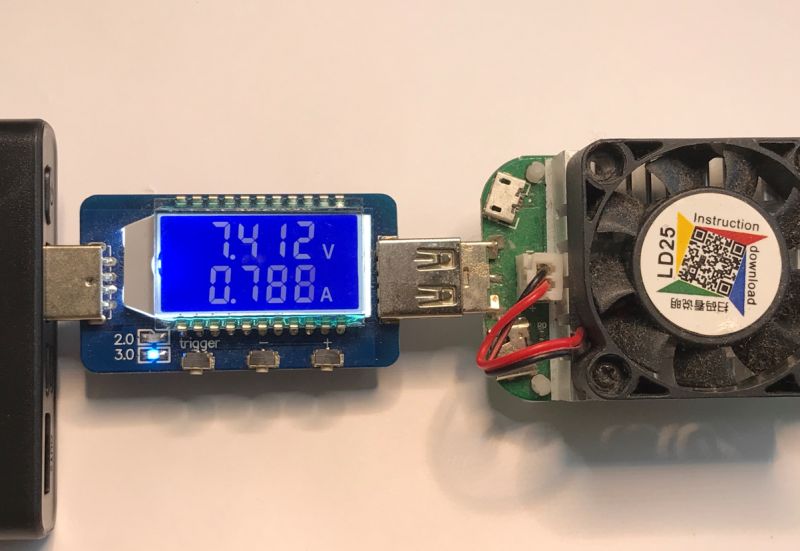
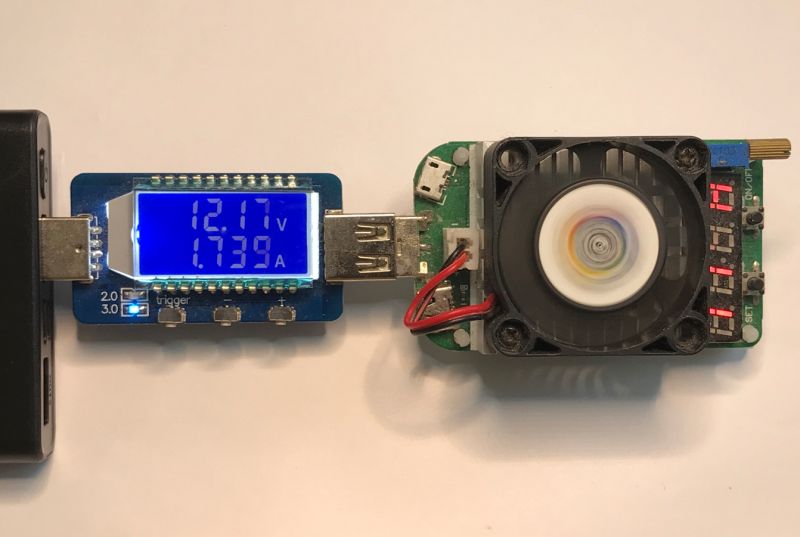
Now a load test at 5 V. Managed to draw 4 A, 2 A per port. This comes out to a good 20 watts.
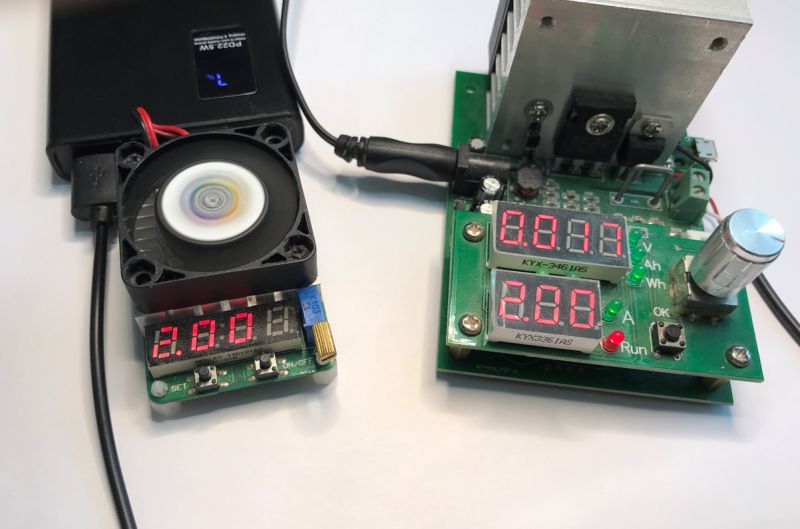
Now a practical test. How will my Xiaomi 11T charge?
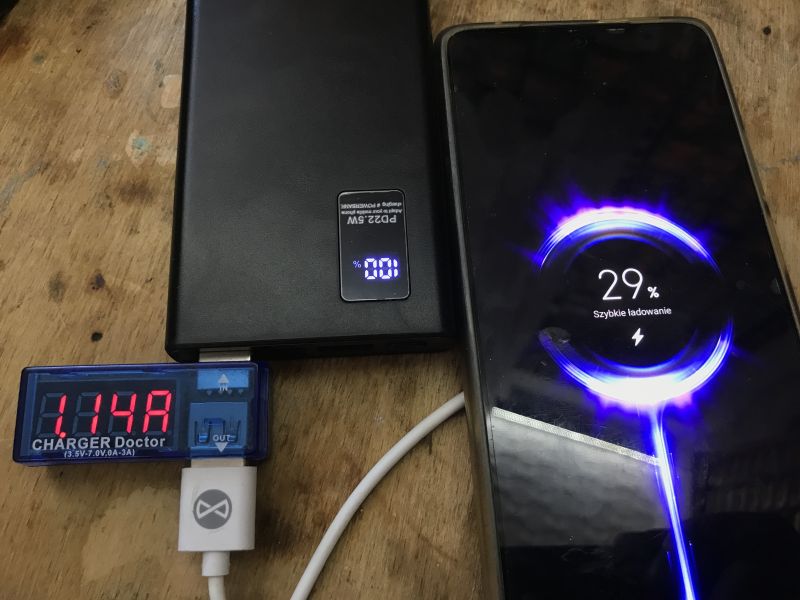
It charges at 7.5 volts, the current is first just over 1 A, then increases to 1.83 A:
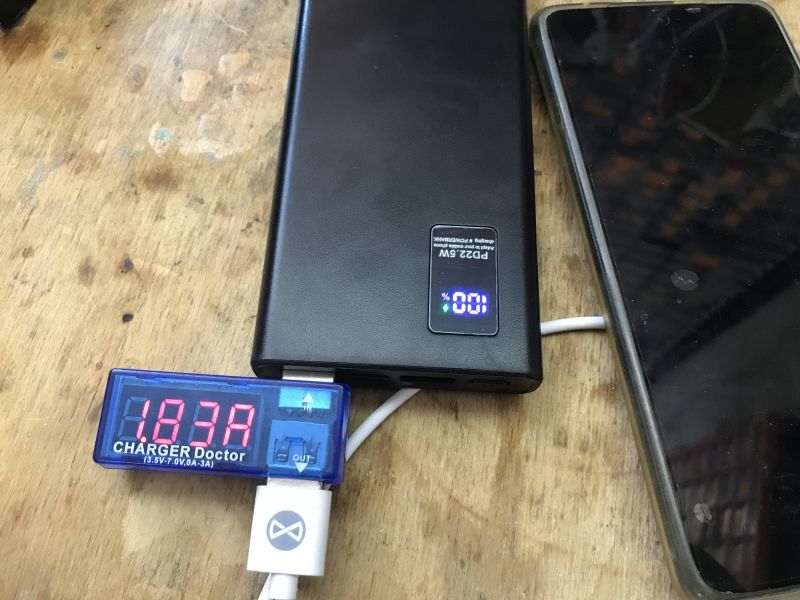
A green icon lights up on the display.
I also checked what if I connect an additional load - then the QC shuts down and the voltage drops to 5 V:
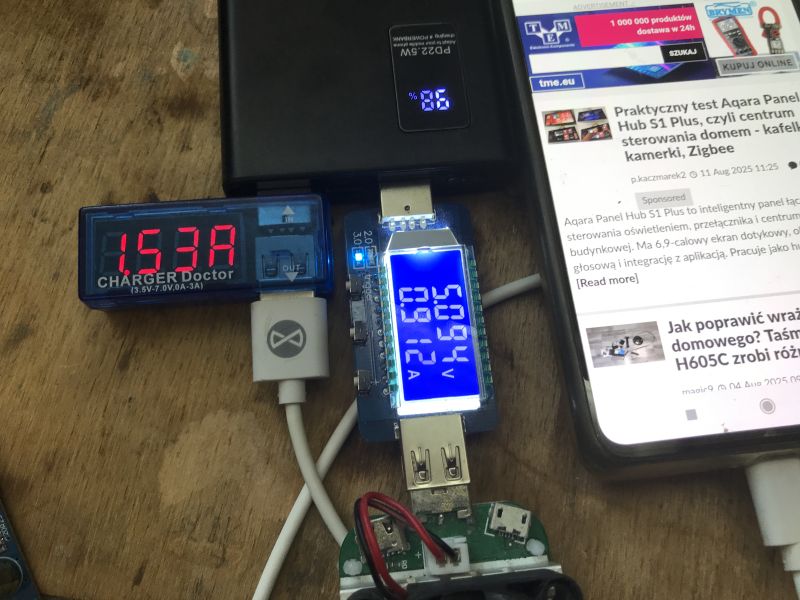
Then it was time for the capacity test - this would be the capacity at 5 V, then need to be converted to cell capacity. I repeated the test three times.
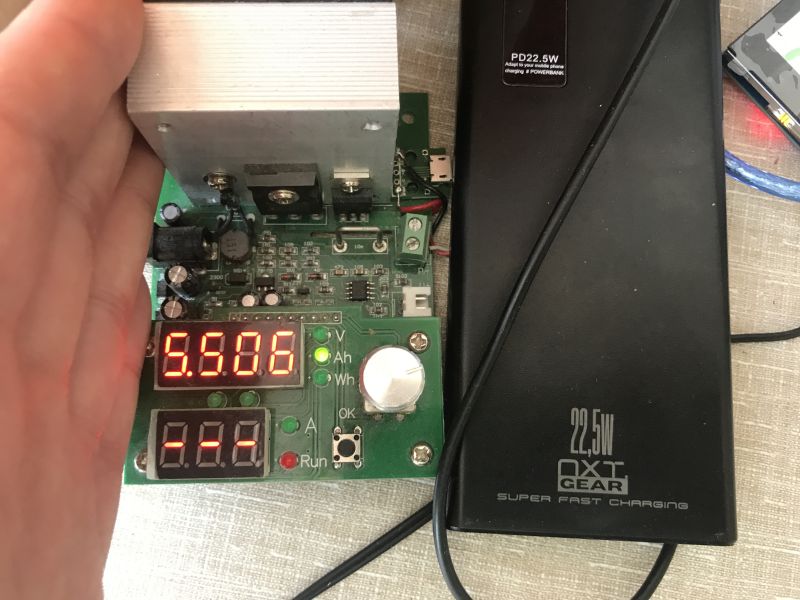
5.5 Ah at 5 V gives 27.5 Wh. According to my conversion from previous topics , this would be approximately (5.5/0.65) Ah = 8.46 Ah.
Test BY-K8
Without much comment - unpacking and instructions.


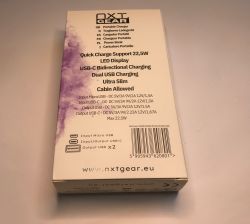
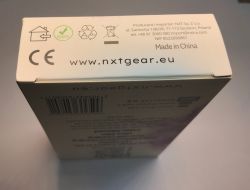

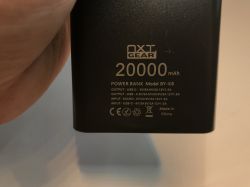
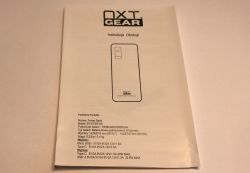

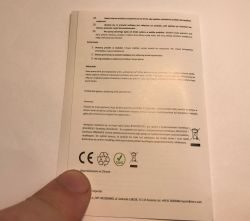
The powerbank is necessarily slightly larger and heavier. However, it has the same connectors as the previous one.

With Quick Charge as before:

I tested the capacity with five times:
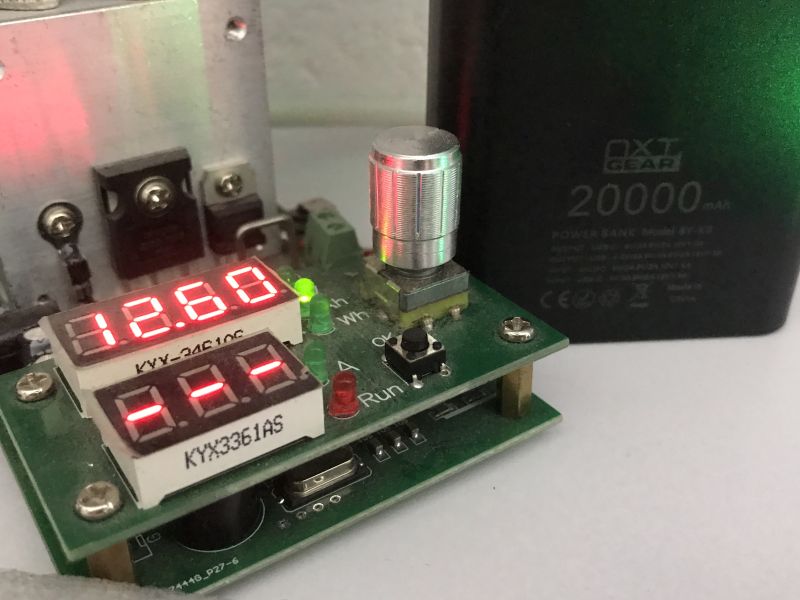
12.6 Ah at 5 V gives 63 Wh. According to my conversion from previous topics , this would be about (12.6/0.65) Ah = 19.4 Ah.
Test BY-K9
Now this box is much bigger:
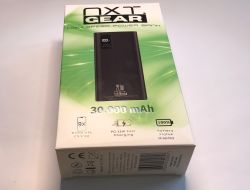


Rest as before, cable included, instructions.
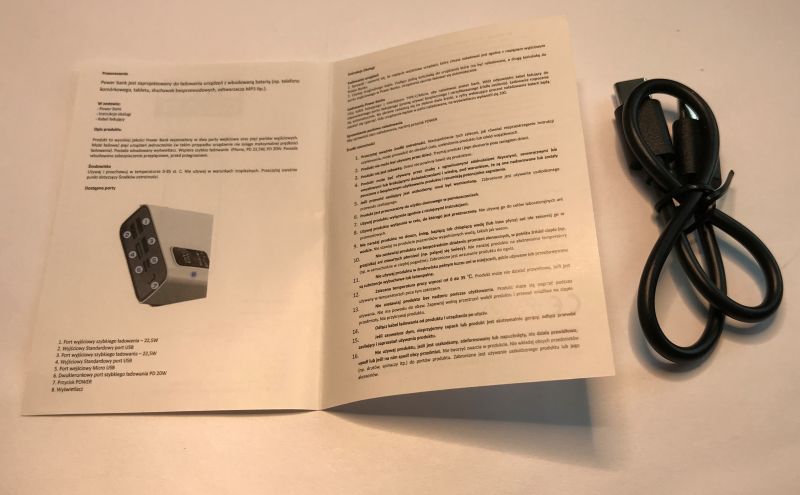

However, there are more ports:

QC works fine, again shuts down at around 22 W:
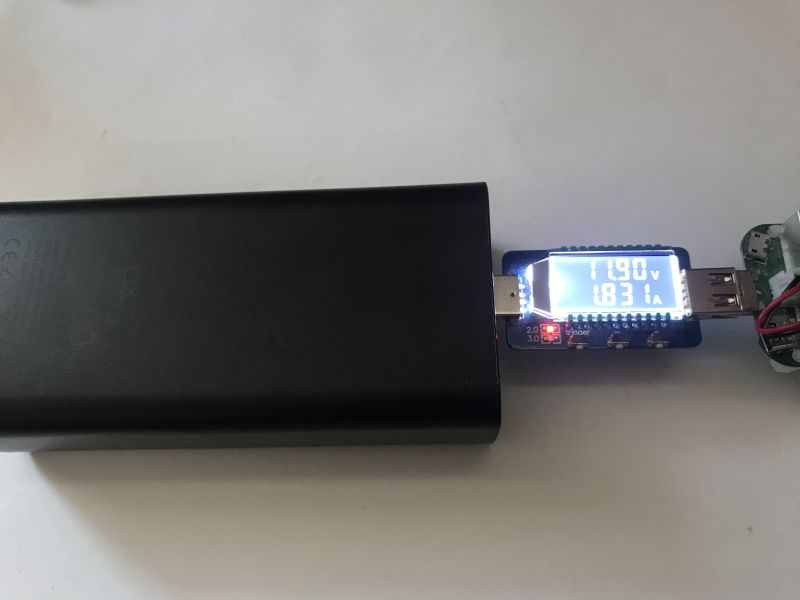
Just over 3.5 A at 5 V can be drawn from a single port:
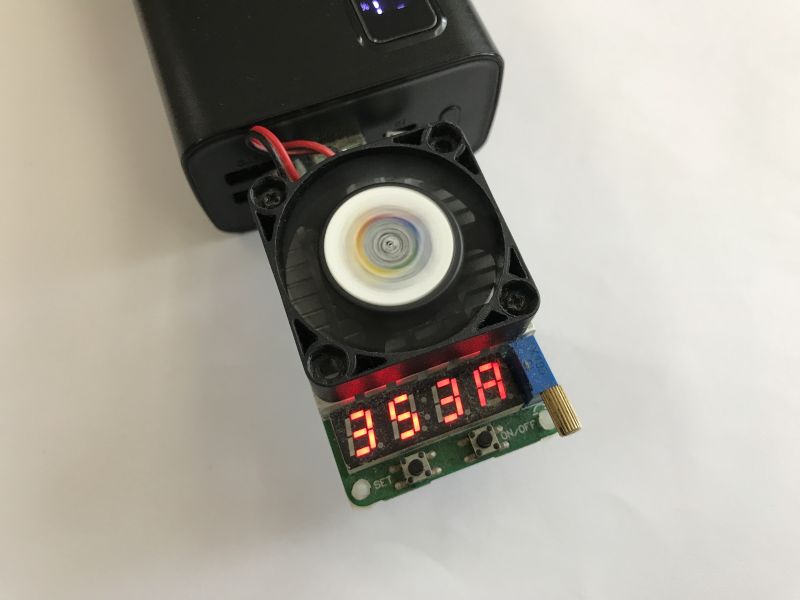
The QC shuts down again as soon as I connect something more, e.g. here an additional load:
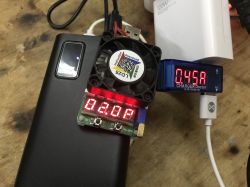
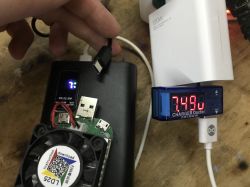
I repeated the capacity tests again several times:
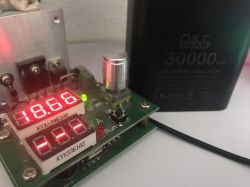
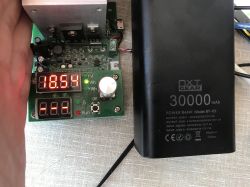
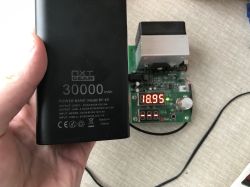
Let's take these 18.95 Ah at 5 volts for calculation. That comes out to just under 95 Wh. According to my conversion from previous topics , this would be about (18.95/0.65) Ah = 29.15 Ah.
Summary
From my estimates, these powerbanks have 8.46 Ah, 19.4 Ah and 29.15 Ah respectively. The first result is possibly acceptable, the others are good. With other powerbanks, for example Baseus ( link to test ), it was better, but there were also much worse copies.
I also checked the current capacity and QC. I think it is very good - we get what the seller promised. It even managed to get 12 volts, although my phone didn't switch on as much as that voltage, it only stopped at 7.5 volts. The powerbank itself is also able to take the increased voltage, as we connect it to a suitable power supply. On a side note, I've observed that the QC shuts down when you plug in a second USB cable - no matter whether to charge the device itself or something external. This means that by connecting the phone for charging "via powerbank" we lose the QC option altogether and this should be kept in mind, but I don't suppose anyone does this?
From which powerbanks do you use - with QC or still without?
Cool? Ranking DIY Helpful post? Buy me a coffee.



